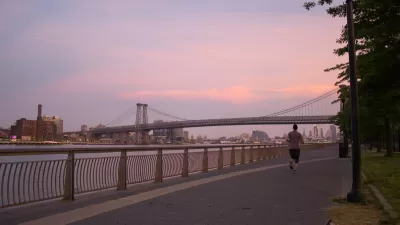Extreme events tend to expose the true weaknesses and strengths of a place and its people. In the same way that Sandy revealed the shortcomings in NY's physical infrastructure, it has shown the growing chasm in the city's economic infrastructure.
Few of the New York metro area's 19 million residents have gone untouched by superstorm Sandy, but as David Rohde contends, "[the storm] humbled some more
than others in an increasingly economically divided city." In Manhattan, for instance, a decade of increasing disparity between rich and poor has resulted in levels of inequality that "rivals parts of sub-Saharan Africa."
"Divides between the rich and the poor are nothing new in New York,
but the storm brought them vividly to the surface," observes Rohde. "There were residents
like me who could invest all of their time and energy into protecting
their families. And there were New Yorkers who could not."
"Those with a car could flee. Those with wealth could move into a
hotel. Those with steady jobs could decline to come into work. But the
city's cooks, doormen, maintenance men, taxi drivers and maids left
their loved ones at home."
"The storm affected the affluent as well...But the city's heroes were the tens of thousands of policemen,
firefighters, utility workers and paramedics who labored all night for
$40,000 to $90,000 a year. And the local politicians who focused on
performance, not partisanship, such as New Jersey Governor Chris
Christie, New York Mayor Michael Bloomberg and Newark Mayor Corey
Booker."
FULL STORY: The Hideous Inequality Exposed by Hurricane Sandy

Alabama: Trump Terminates Settlements for Black Communities Harmed By Raw Sewage
Trump deemed the landmark civil rights agreement “illegal DEI and environmental justice policy.”

Planetizen Federal Action Tracker
A weekly monitor of how Trump’s orders and actions are impacting planners and planning in America.

The 120 Year Old Tiny Home Villages That Sheltered San Francisco’s Earthquake Refugees
More than a century ago, San Francisco mobilized to house thousands of residents displaced by the 1906 earthquake. Could their strategy offer a model for the present?

In Both Crashes and Crime, Public Transportation is Far Safer than Driving
Contrary to popular assumptions, public transportation has far lower crash and crime rates than automobile travel. For safer communities, improve and encourage transit travel.

Report: Zoning Reforms Should Complement Nashville’s Ambitious Transit Plan
Without reform, restrictive zoning codes will limit the impact of the city’s planned transit expansion and could exclude some of the residents who depend on transit the most.

Judge Orders Release of Frozen IRA, IIJA Funding
The decision is a victory for environmental groups who charged that freezing funds for critical infrastructure and disaster response programs caused “real and irreparable harm” to communities.
Urban Design for Planners 1: Software Tools
This six-course series explores essential urban design concepts using open source software and equips planners with the tools they need to participate fully in the urban design process.
Planning for Universal Design
Learn the tools for implementing Universal Design in planning regulations.
Clanton & Associates, Inc.
Jessamine County Fiscal Court
Institute for Housing and Urban Development Studies (IHS)
City of Grandview
Harvard GSD Executive Education
Toledo-Lucas County Plan Commissions
Salt Lake City
NYU Wagner Graduate School of Public Service





























